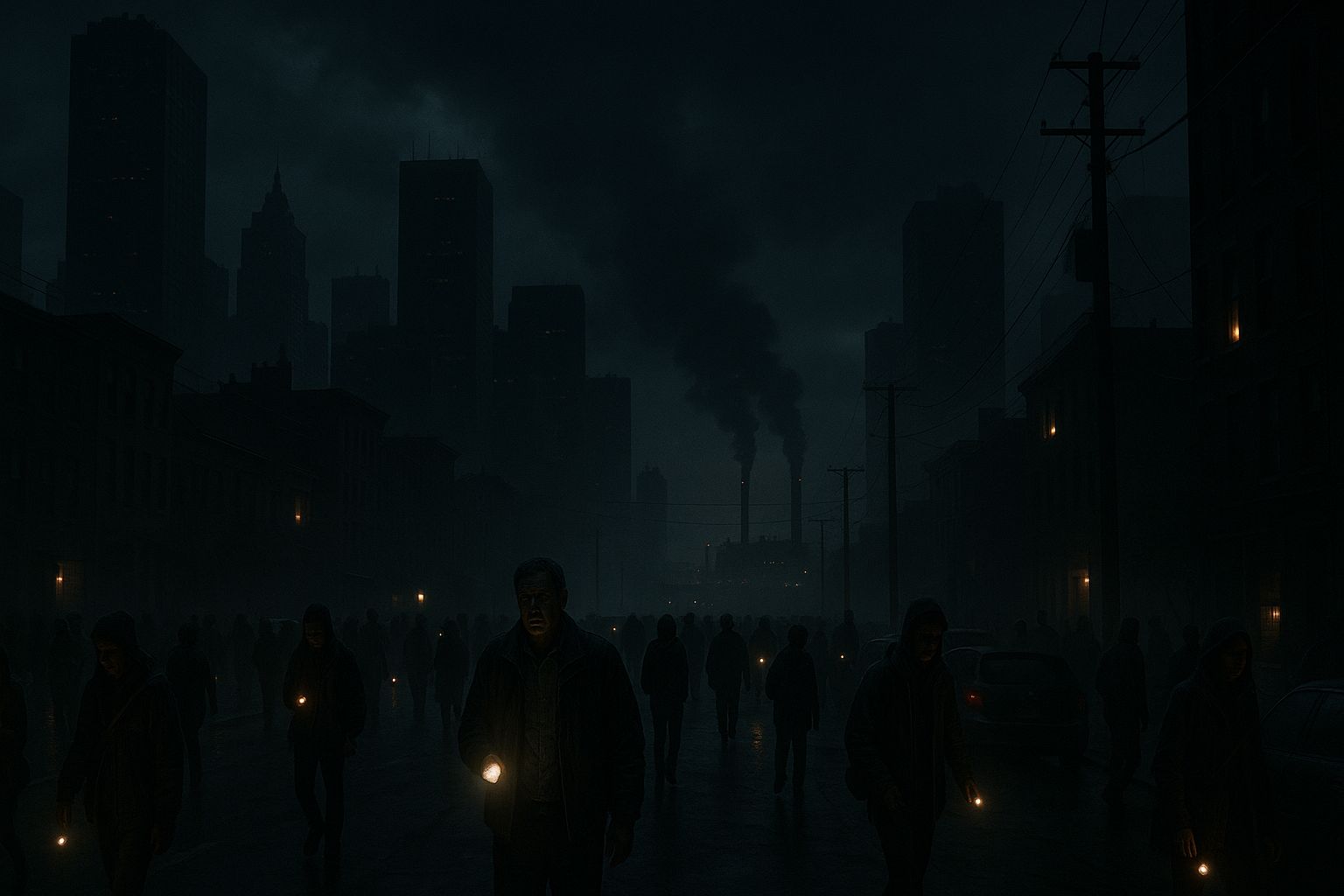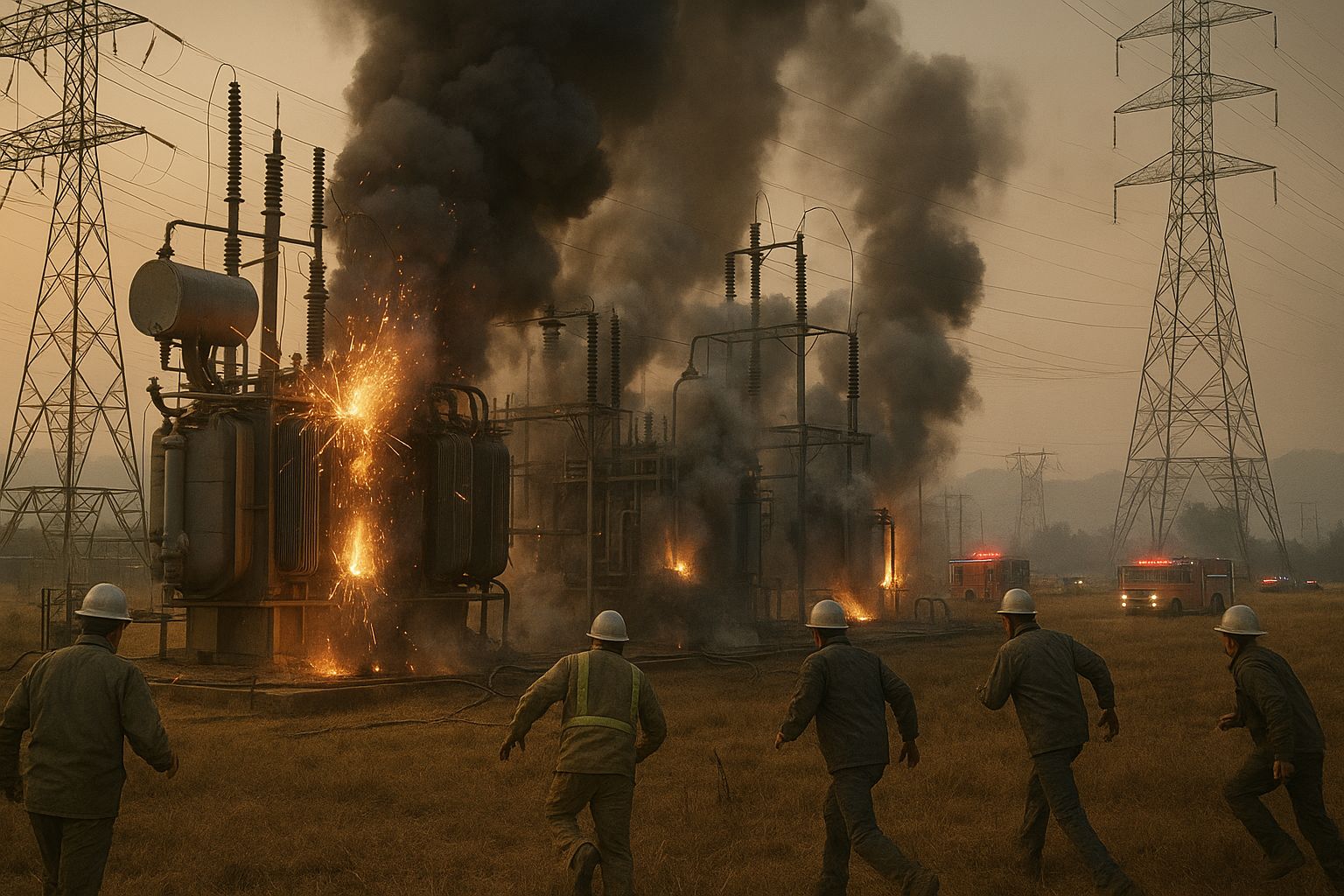- Green Glow
- Posts
- 🌱 The Shocking Truth: America May Not Have Enough Electricity by 2030 🚨⚡️
🌱 The Shocking Truth: America May Not Have Enough Electricity by 2030 🚨⚡️
The U.S. may face a dangerous electricity shortage by 2030 as demand surges from AI, data centers, and electrification while aging grid infrastructure, stalled renewables, and political policies slow supply. Learn why experts warn of a real energy emergency—and what must be done to prevent it.
The United States is one of the world’s largest energy consumers and producers, yet experts warn that the nation may soon face an unprecedented challenge: a potential shortage of electricity by 2030. With electricity demand projected to surge by nearly 25%—driven by booming AI infrastructure, data centers, electrified transportation, and economic growth—the existing grid simply isn’t prepared.
This isn’t fearmongering. It’s a warning backed by data, industry reports, and recent government decisions.
Table of Contents

AI, Data Centers, and the Digital Boom Are Consuming Power at Record Levels
The explosion of artificial intelligence—particularly large-scale AI training, cloud computing, and generative models—has created an insatiable appetite for electricity.
New data centers require hundreds of megawatts, the equivalent of powering entire cities.
AI workloads have increased tenfold in the past five years.
Major tech firms are scrambling to secure guaranteed access to power.
As companies compete for energy, even traditional industries—manufacturing, logistics, healthcare—are feeling the strain. The grid, designed for the 20th century, is being pushed into 21st-century overload.
Renewables Are Growing—But Not Fast Enough
Renewable energy—solar, wind, hydro—is expanding rapidly. But expansion alone is not the issue; connectivity is.
Large-scale renewable projects are being built, completed, and left idle while waiting for connection to the grid. For example:
A nearly complete offshore wind project with all turbines installed remains offline.
Transmission upgrades move at a glacial pace due to red tape and political decision-making.
Grid operators say it currently takes 7–10 years to connect new renewable projects.
The U.S. has enough renewable potential to power the country several times over, but bureaucracy and outdated infrastructure are holding it back.
Political Decisions Are Disrupting Energy Progress
Recent policy shifts have created uncertainty across the energy sector. Support for renewable infrastructure has been paused, reversed, or deprioritized in favor of fossil fuels.
Key concerns include:
The White House blocking rapid progress on major offshore wind projects
Cuts to federal funding and research for green energy innovation
A renewed push for oil and gas expansion
While oil and gas production remain at record highs, they cannot fill the looming electricity gap in time—mainly because building modern gas plants takes years and faces severe supply chain delays.
The U.S. Power Grid Is Aging and Overstressed
America’s electrical grid is a patchwork of outdated transmission lines, aging power plants, and vulnerable infrastructure.
How bad is it?
70% of transmission lines are at least 25 years old
Extreme weather events are increasing in frequency and intensity
Aging systems lead to failures, blackouts, and wildfires
Maintenance backlogs stretch into the billions
Utilities warn that without urgent upgrades, reliability will decline dramatically.

The Demand-Supply Gap Will Hit Consumers and Businesses Hard
If current trends continue, the U.S. will face a dramatic mismatch between electricity supply and demand. The consequences will be far-reaching:
For consumers
Higher electricity bills
More frequent blackouts or rolling outages
Reduced reliability during heatwaves or storms
For businesses
Data centers forced to relocate or delay expansions
Manufacturing interruptions
Higher operating costs
Reduced competitiveness
For national security
Critical infrastructure—hospitals, military bases, airports—faces increased risk
Cyberattacks could exploit vulnerable and overloaded systems
What Needs to Change—Fast
To avoid a full-scale energy emergency, experts say the U.S. must act immediately. Solutions include:
1. Modernizing the grid
Upgrading transmission lines
Building new high-voltage lines
Investing in smart-grid technology
2. Accelerating renewable integration
Reducing permitting bottlenecks
Prioritizing grid connections
Expanding battery storage capacity
3. Supporting a balanced energy mix
Renewables must coexist with reliable baseload sources
Gas and nuclear can play crucial roles
Policymakers must avoid sudden, politically driven swings
4. Incentivizing efficiency
Energy-efficient data centers
Smarter building standards
Demand-response systems

Conclusion
The U.S. is on a collision course with an energy crisis of its own making. Rising demand, stalled renewable adoption, aging grid infrastructure, and political hurdles are converging into what could be a national emergency by 2030.
The shocking truth is simple:
If America fails to modernize and expand its energy infrastructure today, it may not have enough electricity tomorrow.
The warning signs are here. The question is—will the nation listen?
FAQs
Why might the U.S. run out of electricity by 2030?
The U.S. faces a perfect storm of rising demand, aging infrastructure, slow renewable integration, political shifts, and delayed natural gas plant construction. Data centers, AI computing, electric vehicles, and economic growth are pushing electricity demand up by nearly 25%, while grid upgrades lag far behind.
How is artificial intelligence causing electricity demand to rise?
AI systems require massive computational power. Large data centers operate 24/7, consuming enormous amounts of electricity. The expansion of generative AI, cloud computing, and machine learning training has accelerated power consumption at a pace utility companies did not anticipate.
Are renewable energy sources failing to meet the demand?
Renewables are expanding rapidly, but grid connection delays and regulatory barriers prevent them from contributing as much as they could. Even fully constructed wind farms and solar projects are waiting years to get connected due to outdated grid infrastructure.
Can fossil fuels solve the coming energy shortage?
Not in time. While oil and gas production are high, modern natural gas plants take years to build and require complex permitting and supply chains. They cannot ramp up fast enough to offset the rapidly rising demand.
What role does the power grid’s age play in this issue?
The U.S. grid is old—about 70% of transmission lines are more than 25 years old. Aging infrastructure increases the risk of blackouts, failures, and even wildfires. Without upgrades, it cannot safely handle the surge in electricity load.
You May Also Like
🌱 Africa on Fire: How Climate Change is Supercharging Heatwaves 🌍🔥
🌱 Why the UK’s Early Heatwave Is a Clear Sign of Climate Change 🔥🌡️
🌱 How Low-Level Air Pollution Quietly Damages Your Heart Over Time 💔💨
🌱 China Is Winning the Green Tech War. The U.S. Isn't Even Fighting 🌞🔋
🌱 16 Game-Changing Actions Cities Can Take to Combat Climate Change 🌆♻️
External Links
Countries must protect human right to a stable climate, court rules
Mauna Loa Observatory captured the reality of climate change. The US plans to shut it down
Climate change cuts milk production, even when farmers cool their cows
Explainer: Do international carbon credits fight climate change?
Coral transplants could help save Miami’s iconic reefs from climate change
Follow Us:
X: https://www.x.com/greenglownews
Youtube: https://www.youtube.com/@greenglownews
Instagram: https://www.instagram.com/greenglownews
Sponsored Links